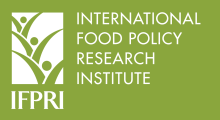Resource information
Ethiopia’s national development strategy, A Plan for Accelerated and Sustained Development to End Poverty for 2005/06 to 2009/10 (PASDEP) places a major emphasis on achieving high rates of agricultural and overall economic growth. Consistent with the PASDEP, Ethiopia is also in the process of implementing the Comprehensive Africa Agriculture Development Programme (CAADP) together with other African governments. As part of CAADP, the country has committed itself to meeting targets of devoting at least 10 percent of public expenditures to agriculture and to achieving a 6 percent growth rate in agricultural GDP. Ethiopia has already met these targets in recent years. The challenge remains, however, to continue to devote these public resources and to achieve high growth rates through 2015. This paper analyzes agricultural growth options that can support high levels of agricultural development using a new computable general equilibrium (CGE) model for Ethiopia based on data from the EDRI 2005/06 Ethiopia SAM (Ahmed et al. 2009). The CGE model results indicated that if Ethiopia can meet its targets for crop yields and livestock productivity, then it should be possible to reach and sustain the six percent agricultural growth target during 2006-2015. Even though these yield targets are below the maximum potential yields identified by agricultural field trials, they are still ambitious given the short timeframe of the CAADP initiative (i.e., seven years). Achieving agricultural growth of six percent per year would reduce national poverty to 18.4 percent by 2015, lifting an additional 3.7 million people out of poverty compared to a base simulation using medium term growth rates. Most households are expected to benefit from faster agricultural growth. However, some agro-ecological zones that grow higher value cereals and export-oriented crops and which are better situated to larger urban markets (e.g., the rainfall sufficient highlands) stand to gain more than other parts of the country. Both rural and urban households benefit from faster agricultural growth (and thereby overall economic growth), as rural producers benefit from increased agricultural productivity and incomes, while net purchasers of food in both rural and urban areas benefit from moderate declines in real food prices. Composition of agricultural growth matters, though. Additional growth driven by cereals has larger impacts on poverty reduction, because these crops already constitute a large share of rural incomes and so can contribute substantially to achieving broad-based agricultural growth. Yield improvements in these crops not only benefit farm households directly, by increasing incomes from agricultural production, but also by allowing farmers to diversify their land allocation towards other higher-value crops. Increased productivity of cereals that reduces real cereal prices is also effective at raising rural real incomes and reducing poverty, especially amongst the poorest households. Thus, high priority should be afforded to improving cereals yields and opening market opportunities for upstream processing to reduce demand constraints.


